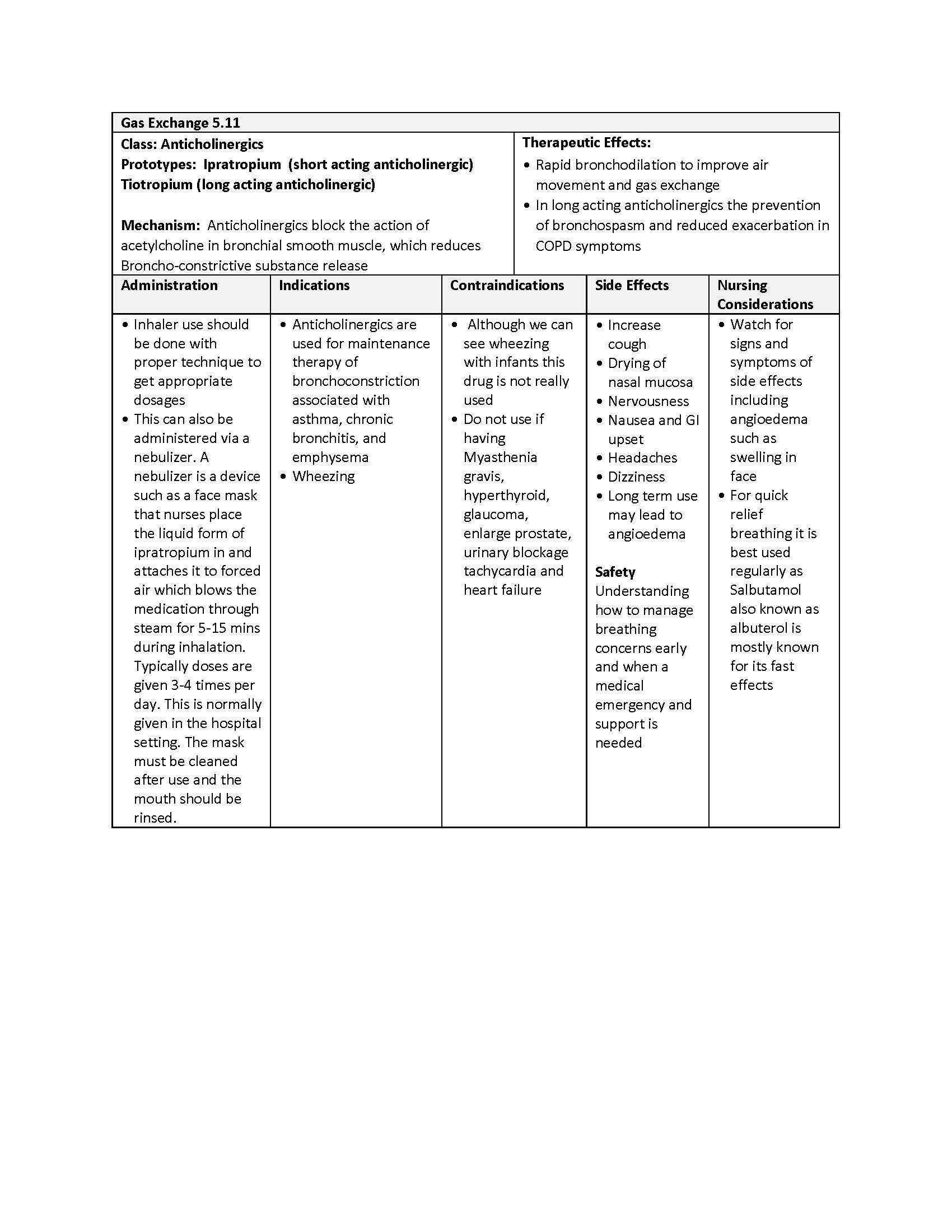Gas Exchange
5.11 Anticholinergics
Open Resources for Nursing (Open RN)
Anticholinergics
Ipratropium is an example of a short-acting anticholinergic. Tiotropium is an example of a long-acting anticholinergic. Additional information regarding anticholinergics can be found in the “Autonomic Nervous System” chapter. (See Figure 5.11[1] for an image of tiotropium.)

Mechanism of Action
Anticholinergics block the action of acetylcholine in bronchial smooth muscle, which reduces Broncho-constrictive substance release.
Indications for Use
Anticholinergics are used for maintenance therapy of bronchoconstriction associated with asthma, chronic bronchitis, and emphysema.
Adverse/Side Effects
Anticholinergics should be used with caution with the elderly and can cause cough, drying of the nasal mucosa, nervousness, nausea, GI upset, headaches, and dizziness.[2]
Anticholinergic Drugs across the Life Span
Wheezing is an indication for using anticholinergic drugs but although we do see wheezing in infancy, using these drugs remains controversial. Most wheezing in infancy is in response to viral infections.
Client Teaching & Education
Client should be instructed to use the inhaler as directed and be careful not to exceed dosage recommendations. They should receive education regarding the onset of medication and differences in usage for short- and long-acting anticholinergics. Clients with certain diseases should not use anticholinergics including Myasthenia gravis, hyperthyroidism, glaucoma, enlarged prostate, hypertension, urinary tract blockage, tachycardia and heart failure. Some long-acting anticholinergics may cause signs of angioedema and the healthcare provider should be notified if this occurs.[3]
Now let’s take a closer look at the medication card for ipratropium and tiotropium in Table 5.11.[4],[5], [6],[7]
Table 5.11 Ipratropium and Tiotropium Medication Card

Media Attributions
- image3-8
- anticholinergics
- "Spiriva HandiHaler"-brand dry powder inhaler (open).png" by RonEJ at English Wikipedia is licensed under CC0 1.0 ↵
- Frandsen, G. & Pennington, S. (2018). Abrams’ clinical drug: Rationales for nursing practice (11th ed.). Wolters Kluwer. ↵
- uCentral from Unbound Medicine. https://www.unboundmedicine.com/ucentral ↵
- This work is a derivative of Pharmacology Notes: Nursing Implications for Clinical Practice by Gloria Velarde licensed under CC BY-NC-SA 4.0. ↵
- Frandsen, G. & Pennington, S. (2018). Abrams’ clinical drug: Rationales for nursing practice (11th ed.). Wolters Kluwer. ↵
- This work is a derivative of Daily Med by U.S. National Library of Medicine in the public domain. ↵
- Adams, M., Holland, N., & Urban, C. (2020). Pharmacology for nurses: A pathophysiologic approach (6th ed.). pp. 622-63 & 626. Pearson. ↵

